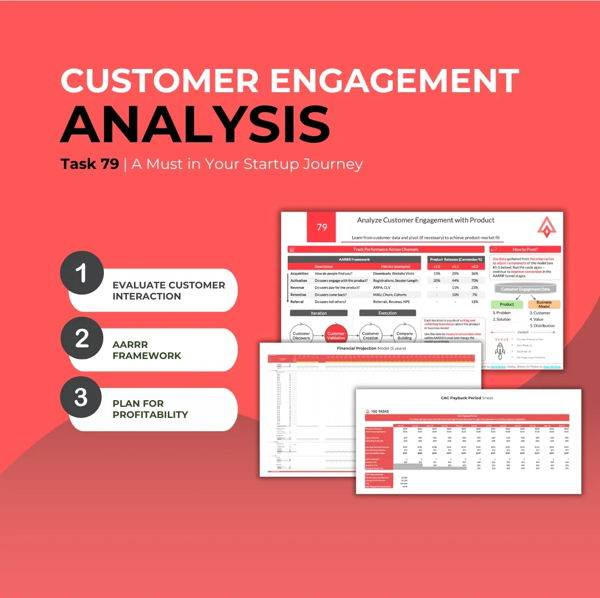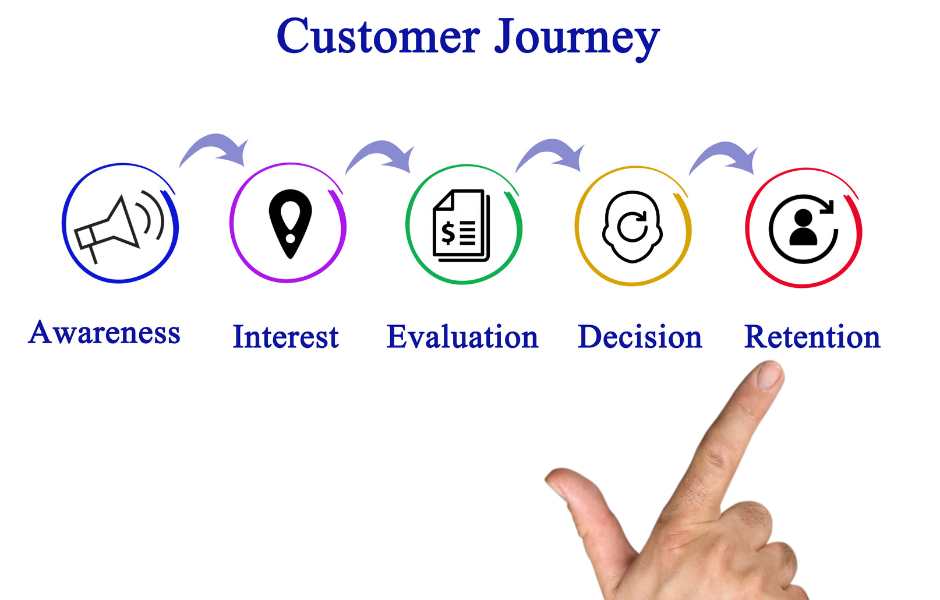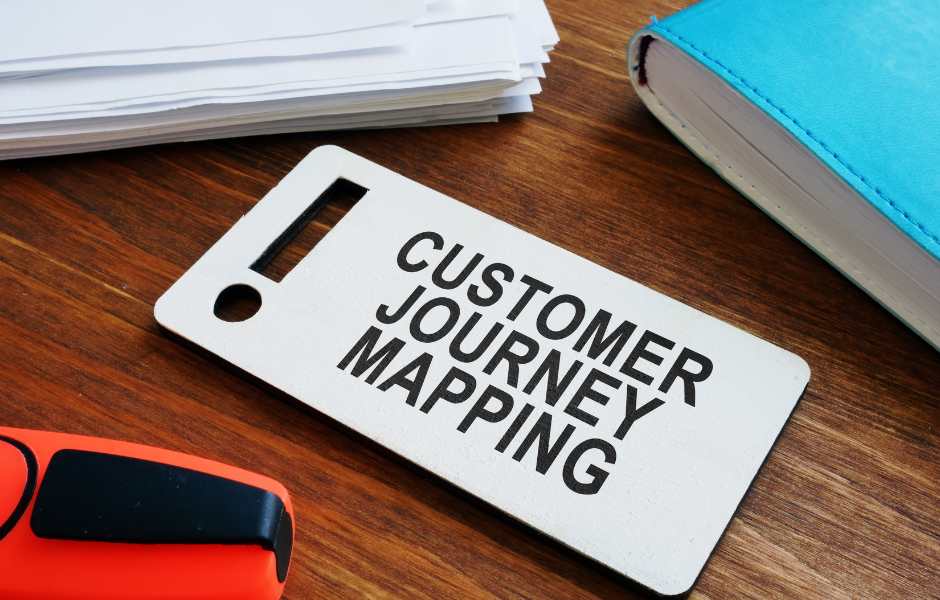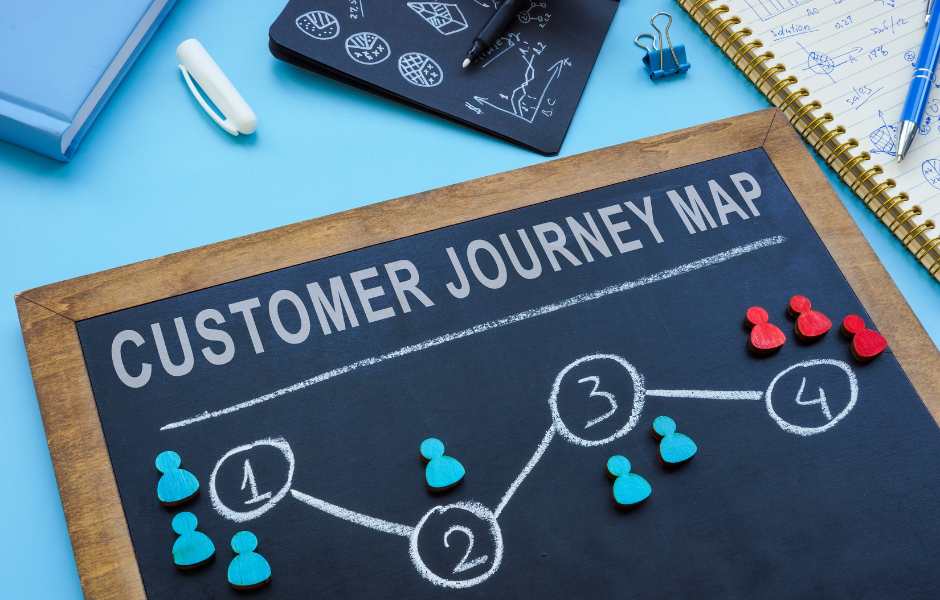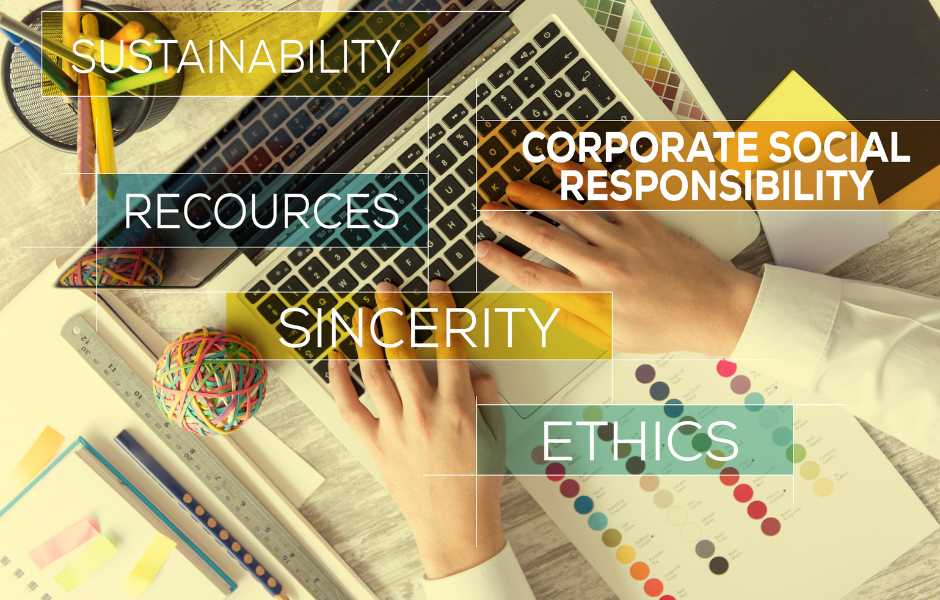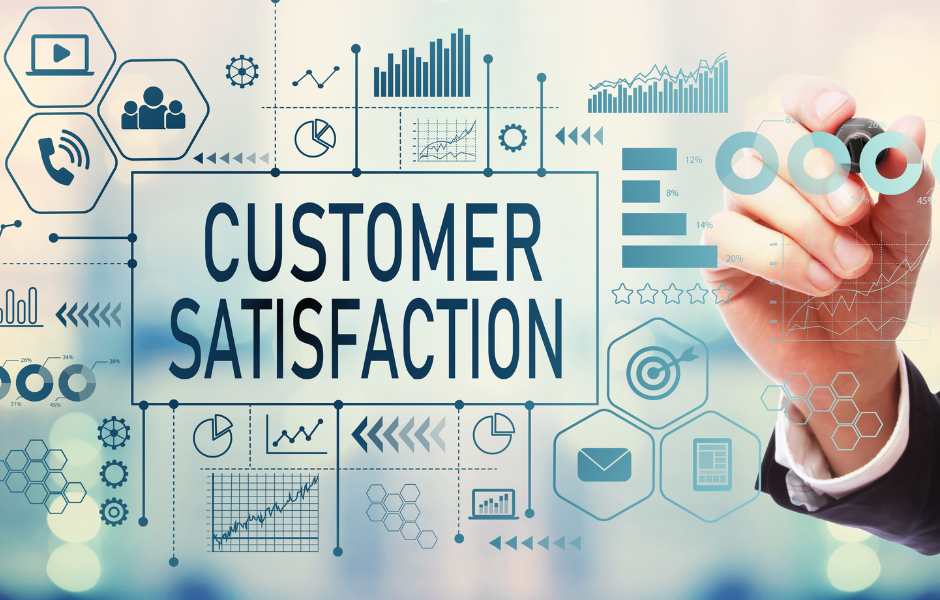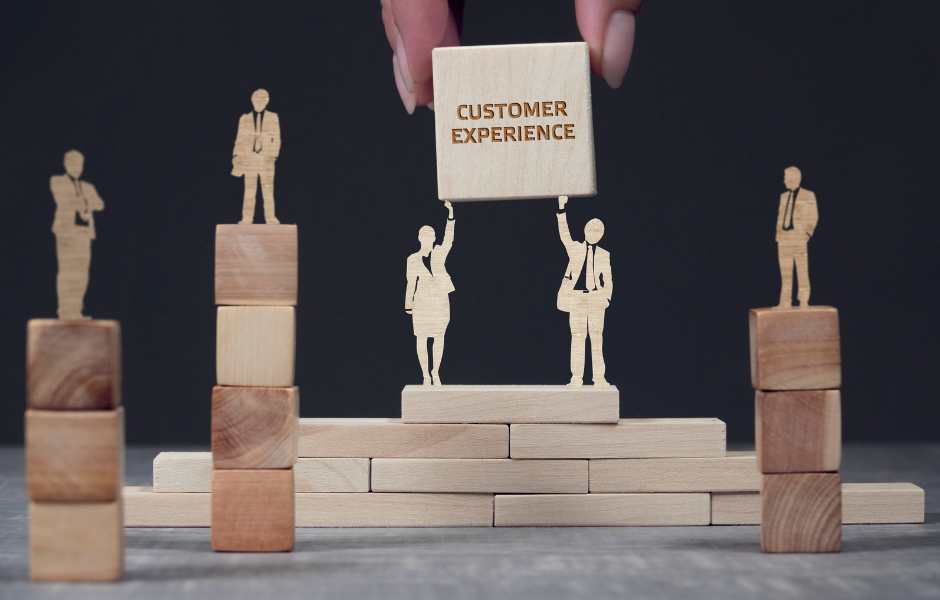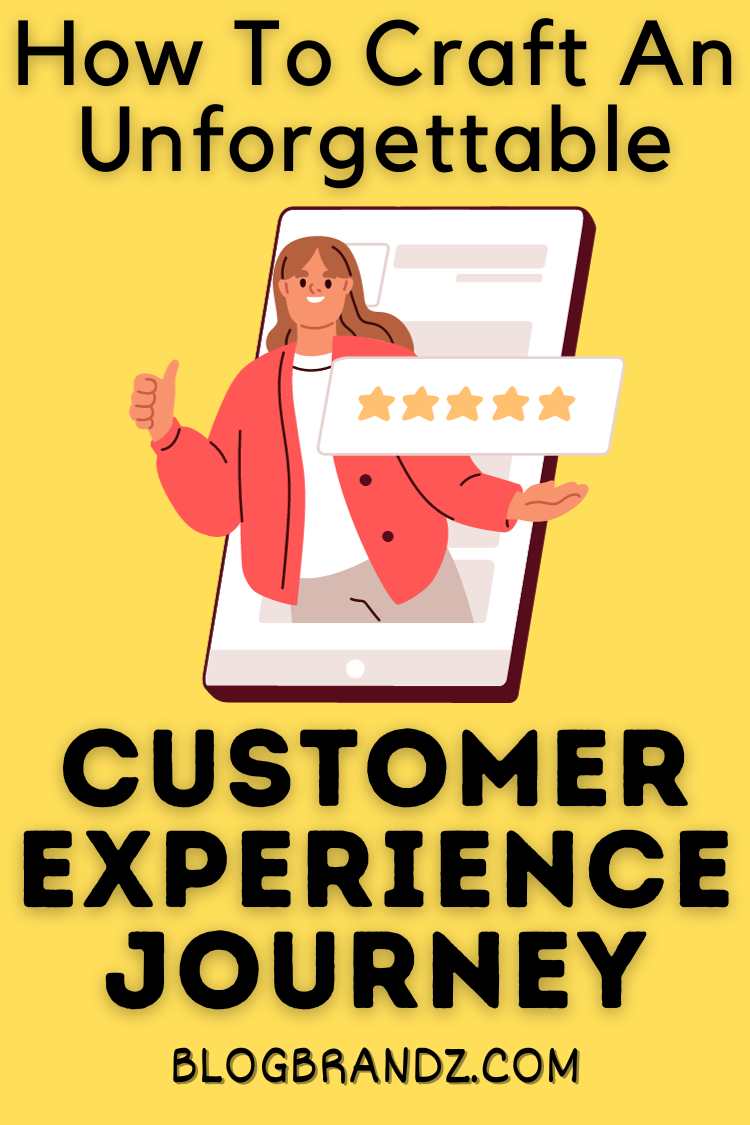Unlock the secrets of customer experience management to craft an unforgettable customer journey that leaves competitors in the dust.
In today’s fast-paced, digitally driven marketplace, businesses no longer compete solely on product or price. Instead, the battleground has shifted to something more profound—the customer experience.
Customer experience management has emerged as a critical aspect of business success, and companies are increasingly seeking professionals who can lead their CX efforts. Customer experience is a universal concept that applies to businesses of all sizes and sectors.
Whether one works in retail, finance, healthcare, or technology, understanding and implementing effective CX strategies is essential. It’s the secret sauce that transforms one-time shoppers into lifelong advocates, and it’s the ultimate differentiator in a world teeming with options.
In this article, we unveil the art and science of crafting a transformational customer experience that turns everyday transactions into remarkable, loyalty-building moments.
Click here to get the Ultimate Founders Checklist
Contents
- 12 Steps on the Digital Customer Journey
- What Is Customer Journey Mapping?
- 20 Steps to Improving Customer Experience
- #1. Personalization
- #2. Excellent Customer Service
- #3. Seamless User Experience
- #4. Anticipate Needs
- #5. Convenience
- #6. Fast and Reliable Delivery
- #7. Transparency
- #8. Loyalty Programs
- #9. Social Responsibility
- #10. Community Building
- #11. Educational Resources
- #12. Follow-Up and Feedback
- #13. Emotional Connection
- #14. Gamification
- #15. Exceed Expectations
- #16. User-Centric Design
- #17. Employee Training
- #18. Consistency
- #19. Flexibility
- #20. Listen and Respond
- 7 Customer Experience Management Courses
- #1. Customer Experience Management & Customer Journey Mapping
- #2. Using Customer Experience to Grow Your Customer Base
- #3. Customer Experience Management (CX) Masterclass
- #4. Customer Experience (CX) in Industry 4.0
- #5. Omnichannel Customer Experience Management (CX)
- #6. Customer Experience Certification Workshop
- #7. Chief Customer Experience Officer Executive Certification
- 13 Types of Customer Experience Platforms
- #1. CRM Software
- #2. Personalization Tools
- #3. Email Marketing Software
- #4. User Experience (UX) & User Interface (UI) Design Tools
- #5. Analytics and Feedback Tools
- #6. Loyalty Program Management
- #7. Content Management Systems (CMS)
- #8. Social Media Management Tools
- #9. Customer Support & Ticketing Systems
- #10. E-commerce Platforms
- #11. Learning Management Systems (LMS)
- #12. Gamification Platforms
- #13. Employee Training & Development Tools
- Conclusion
- Business Tips & Tutorials
12 Steps on the Digital Customer Journey
The digital customer journey encompasses the various stages that a customer goes through while interacting with a company or brand online. These stages can vary depending on the nature of the business, but generally, they include the following steps:
#1. Awareness
The customer becomes aware of your brand or product, often through marketing efforts such as social media, advertising, or content marketing.
#2. Research
After becoming aware of your brand, the customer may research your products or services. This can involve visiting your website, reading reviews, and comparing your offerings to competitors.
#3. Consideration
The customer evaluates the information they’ve gathered during the research phase and decides whether your product or service meets their needs or preferences.
#4. Purchase
Once the customer is convinced, they proceed to make a purchase. This can occur on your website, mobile app, or through other digital channels.
#5. Post-Purchase Experience
After making a purchase, the customer’s experience doesn’t end. This phase involves factors like shipping and delivery, customer support, and follow-up communication.
#6. Engagement and Loyalty
Customers who have had a positive post-purchase experience are more likely to become loyal. Engaging with your brand through email marketing, social media, or loyalty programs can help nurture this loyalty.
#7. Advocacy
Satisfied and loyal customers may become advocates for your brand. They recommend your products or services to others, leave positive reviews, and actively promote your brand on social media.
#8. Retention and Repeat Purchase
Encourage customers to come back for repeat purchases. Offering personalized recommendations, exclusive discounts, or loyalty rewards can boost retention.
#9. Feedback and Improvement
Encourage customers to provide feedback, both positive and negative. Use this information to make continuous improvements in your products, services, and customer experience.
#10. Cross-Selling and Up-Selling
Identify opportunities to cross-sell related products or up-sell to higher-tier services. Leverage data and customer behavior to make relevant offers.
#11. Churn Prevention
Monitor customer behavior for signs of disengagement or churn. Implement strategies to re-engage and retain at-risk customers.
#12. Community Building
Foster a sense of community among your customers. This can be done through forums, social media groups, or user-generated content that encourages interaction and brand advocacy.
It’s important to note that the digital customer journey is not always linear, and customers may move back and forth between stages.
Understanding this journey and optimizing each touchpoint is essential for providing an excellent digital customer experience and ultimately building lasting customer relationships.
What Is Customer Journey Mapping?
Understanding the path your customers tread is the compass that guides your efforts, the map that charts your course, and the key to unlocking the coveted treasure trove of customer loyalty and advocacy.
Customer journey mapping or consumer journey mapping is a powerful tool that reveals the inner workings of your customers’ experiences, triumphs, tribulations, and aspirations.
Also known as user journey mapping or client journey mapping, it is a visual representation of a customer’s experiences, interactions, and touchpoints with a brand or business across various stages of their engagement.
Customer journey mapping and customer experience journey mapping are terms that are often used interchangeably, but they can have nuanced differences in their scope and focus.
Customer Journey Mapping:
This term typically focuses on mapping the specific stages, touchpoints, and interactions that a customer goes through when engaging with a brand or business.
It may primarily deal with the steps a customer takes in a particular process, such as the steps leading to a purchase, the post-purchase experience, or a specific customer service interaction.
Customer journey mapping aims to visualize and understand the customer’s actions, emotions, and pain points during these interactions.
Customer Experience Journey Mapping:
This term broadens the scope to encompass the entire experience a customer has with a brand across all interactions, touchpoints, and stages.
It looks at the holistic experience a customer has with a brand, including everything from initial awareness to post-purchase support and advocacy.
Customer experience journey mapping takes into account not only individual transactions but the overall relationship and perception a customer has of a brand.
In summary, customer journey mapping often delves into specific, isolated interactions or processes, while customer experience journey mapping takes a more comprehensive view, considering the entirety of a customer’s experience with a brand.
Both of these processes help organizations gain a deeper understanding of their customers’ perspectives and allow them to identify opportunities to enhance the customer experience.
Here’s how customer journey mapping typically works:
- Identify the Customer Persona: Start by defining specific customer personas or segments. These represent different types of customers who engage with your brand.
- Stages of the Customer Journey: Determine the key stages or phases that a customer goes through when interacting with your brand. Common stages include awareness, research, consideration, purchase, post-purchase, and advocacy.
- Touchpoints in the Customer Journey: Identify the various touchpoints or channels through which customers interact with your brand. These can include your website, social media, email, customer support, physical stores, and more.
- Customer Actions and Emotions: For each stage and touchpoint, outline the specific actions the customer takes and their emotional state. This helps to understand the customer’s mindset and expectations at different points.
- Customer Pain Points and Opportunities: Identify pain points where customers may face challenges, frustrations, or dissatisfaction. Simultaneously, identify opportunities to provide a better customer experience.
- Customer Journey Mapping: Create a visual representation, often in the form of a journey map or diagram, that illustrates the entire customer journey, incorporating all the identified elements. This map can be as simple or as detailed as needed.
- Customer Journey Analysis: Use the journey map to analyze the customer’s experience, looking for patterns, trends, and opportunities for improvement.
- Customer Journey Optimization: Based on your analysis, implement changes and improvements to address pain points and enhance the overall customer experience.
Customer journey maps are valuable tools for businesses to align their efforts with the needs and expectations of their customers.
They help in designing more customer-centric processes, marketing strategies, and services, ultimately leading to increased customer satisfaction, loyalty, and advocacy.
20 Steps to Improving Customer Experience
Turning a product or service into an unforgettable customer experience involves going above and beyond to delight and satisfy your customers. Here are some examples of how to start improving customer experience:
#1. Personalization
Personalization involves catering to each customer’s unique needs and preferences, creating a more engaging and satisfying experience.
A prime example of this is Netflix. By leveraging customer data, Netflix offers tailored movie and TV show recommendations based on your viewing history.
Their sophisticated algorithm analyzes your past choices and provides content suggestions that align with your taste, ensuring a more enjoyable and customized entertainment experience.
This not only keeps customers engaged and subscribed but also showcases the power of personalization in enhancing user satisfaction and loyalty, ultimately contributing to Netflix’s global success in the streaming industry.
Takeaway: Tailor your product or service to individual customer preferences. Use customer data to offer personalized recommendations and promotions.
#2. Excellent Customer Service
Excellent customer service is the cornerstone of a remarkable customer experience. A noteworthy example is Amazon’s commitment to customer support.
They offer responsive, knowledgeable, and friendly assistance through various channels, including 24/7 chat, email, and phone support. This multichannel approach ensures customers can seek help in their preferred way, enhancing accessibility and convenience.
Amazon’s customer-centric focus is evident in its “Customer Obsession” principle, which has played a pivotal role in building trust and loyalty among its vast customer base.
This commitment to exceptional service showcases the importance of responsive and versatile customer support in creating an exceptional customer experience.
Takeaway: Provide responsive, knowledgeable, and friendly customer support. Implement multiple channels for customer inquiries (e.g., chat, email, phone).
#3. Seamless User Experience
A seamless user experience hinges on user-friendliness and intuitive design. Take Apple as an exemplary case. Apple products are renowned for their user-friendly interfaces, characterized by minimalist design and straightforward navigation.
Whether it’s the iPhone, iPad, or Mac, Apple’s ecosystem prioritizes simplicity and elegance, making it easy for users to adapt and operate seamlessly across their devices. The well-structured interfaces and consistent design principles contribute to a fluid and enjoyable user experience.
This commitment to intuitive design and user-friendliness has been a key factor in Apple’s widespread customer satisfaction and brand loyalty, emphasizing the importance of a user-centered approach in crafting exceptional customer experiences.
Takeaway: Create a user-friendly interface for your product or service. Optimize website and app design for easy navigation.
#4. Anticipate Needs
Anticipating customer needs through predictive analytics and suggesting relevant add-ons or complementary products/services is a powerful way to enhance the customer experience.
An exemplary illustration of this can be found in the way Amazon employs predictive algorithms. By analyzing user behavior and purchase history, Amazon predicts what customers might be interested in buying next.
When a customer views or adds an item to their cart, Amazon provides suggestions for related products or complementary items.
This proactive approach not only simplifies the shopping process but also increases the chances of customers finding additional items of value, ultimately driving higher sales and customer satisfaction.
Anticipating and meeting customer needs before they even express them is a hallmark of an outstanding customer experience.
Takeaway: Use predictive analytics to anticipate customer needs. Suggest relevant add-ons or complementary products/services.
#5. Convenience
Convenience is a crucial aspect of creating an exceptional customer experience. A prime example of this is the ride-sharing service Uber which revolutionized transportation by making it incredibly convenient for customers to request a ride through a user-friendly app.
Customers can input their destination, track the driver’s location, and pay seamlessly through the app, eliminating the need for cash or credit card payments.
Additionally, Uber offers multiple payment options, including credit cards, digital wallets, and even cash in some regions, catering to a wide range of preferences.
The combination of user-friendly technology and flexible payment methods has made Uber a convenient and hassle-free choice for millions of customers worldwide, setting a high standard for convenience in the service industry.
Takeaway: Make it easy for customers to purchase and use your product or service. Offer multiple payment options and quick check-out processes.
#6. Fast and Reliable Delivery
Fast and reliable delivery is a critical component of an exceptional customer experience, and a standout example of this is Amazon Prime.
Amazon Prime is renowned for its reliable and swift delivery service, offering customers the promise of free two-day (or even one-day) shipping on eligible items. Customers can also track their orders in real time, providing transparency and peace of mind.
Furthermore, Amazon Prime offers various delivery options, including same-day and even two-hour delivery in select locations, catering to different urgency levels and customer needs.
This commitment to fast, reliable, and affordable delivery has not only elevated customer satisfaction but also played a pivotal role in Amazon’s success as an e-commerce giant, highlighting the significance of efficient delivery in creating a superior customer experience.
Takeaway: Ensure delivery on time and provide order tracking. Minimize shipping fees and offer expedited options.
#7. Transparency
Transparency is an integral element in building trust and ensuring an exceptional customer experience.
An excellent example of transparency can be seen in the hospitality industry, with Airbnb which provides a platform for individuals to rent their properties, and it places a strong emphasis on open communication.
Hosts are encouraged to provide comprehensive and honest information about their listings, including detailed descriptions, high-quality photos, and reviews from previous guests. Airbnb also ensures that hosts respond promptly and transparently to guest inquiries and concerns.
This level of openness and accountability not only fosters trust between hosts and guests but also enhances the overall customer experience, demonstrating the power of transparency in building strong and lasting customer relationships.
Takeaway: Communicate openly about product/service features and limitations. Address customer concerns honestly and promptly.
#8. Loyalty Programs
Loyalty programs play a significant role in elevating the customer experience, and a prime example is Starbucks and its Starbucks Rewards program.
Starbucks offers customers the opportunity to earn stars for every purchase, and as they accumulate stars, they unlock various perks, including free drinks, customized offers, and access to special promotions.
Furthermore, Starbucks often recognizes and rewards its most loyal customers with personalized surprises and exclusive access to new products or events.
This approach fosters brand loyalty and adds an element of excitement and appreciation for customers, making their coffee shop experience not just about the coffee but also about the overall engagement and special treatment they receive as loyal patrons.
Starbucks’ loyalty program showcases how recognizing and rewarding loyal customers can create a stronger bond and a more gratifying customer experience.
Takeaway: Create loyalty programs with rewards, discounts, or exclusive access. Recognize and reward loyal customers.
#9. Social Responsibility
Demonstrating a commitment to social and environmental causes is ethical and also significantly enhances the customer experience.
Patagonia, the outdoor clothing and gear company, exemplifies this by its strong dedication to environmental and social responsibility. They made sustainability a core part of their brand identity.
They use recycled and organic materials in their products, support fair labor practices, and actively engage in environmental activism. This commitment resonates with customers who share these values.
Patagonia’s “Worn Wear” program, for example, encourages customers to buy used Patagonia products, promoting a culture of reuse and recycling. This not only aligns with the company’s environmental values but also creates a sense of purpose and community among its customers.
By showcasing their commitment to social and environmental causes, Patagonia has cultivated a loyal customer base that values the company’s products and positive impact on the planet and society, enriching the overall customer experience.
Takeaway: Showcase your commitment to social and environmental causes. Engage in ethical and sustainable business practices.
#10. Community Building
Community building is a powerful way to enhance the customer experience, and one excellent example is the beauty brand Sephora.
Sephora has established an online and offline community of beauty enthusiasts through initiatives like the Sephora Beauty Insider program. Members of this loyalty program receive exclusive benefits, and early access to products, and are part of a broader community of like-minded beauty lovers.
Sephora also actively engages customers through online forums, social media groups, and in-store events, where customers can discuss beauty tips, share experiences, and provide feedback. This fosters a sense of belonging and mutual support among customers.
By creating a community of beauty enthusiasts, Sephora builds brand loyalty and enriches the customer experience by turning it into a holistic and engaging beauty journey, where customers feel a sense of camaraderie and belonging within the Sephora community.
Takeaway: Foster a community of like-minded customers. Create forums or social media groups for discussions and feedback.
#11. Educational Resources
Offering educational resources is an effective way to enhance the customer experience, and a notable example is HubSpot, a marketing and sales software company.
HubSpot provides a wealth of educational content through its HubSpot Academy, which offers a wide range of free online courses, certifications, and resources related to inbound marketing, sales, and customer service.
These educational resources empower customers and users to maximize the value of HubSpot’s software. By providing in-depth tutorials, guides, and how-to videos, HubSpot ensures that customers have the knowledge and skills to achieve their marketing and sales goals.
This commitment to education supports customer success and builds trust and loyalty. It demonstrates that HubSpot is invested in the success of its customers and is willing to help them continuously learn and grow, thereby enriching the overall customer experience.
Takeaway: Provide valuable content or resources related to your product/service. Offer tutorials, guides, and how-to videos.
#12. Follow-Up and Feedback
Following up with customers and actively seeking feedback is a crucial aspect of a customer-centric approach, and a prime example of this can be seen in the hospitality industry with Marriott International.
After a guest’s stay, Marriott often sends follow-up emails or surveys to gather feedback on their experience. They inquire about the quality of service, cleanliness, and overall satisfaction.
Marriott takes customer feedback seriously and uses it to make continuous improvements. Whether it’s addressing specific concerns or implementing broader changes based on recurring feedback trends, their commitment to enhancing the guest experience is evident.
This approach not only ensures that guests’ needs and preferences are addressed but also underscores Marriott’s dedication to providing exceptional service. It’s a powerful reminder of the significance of actively seeking and acting on customer feedback to improve and tailor the customer experience.
Takeaway: Send post-purchase follow-up emails or surveys. Use customer feedback to make continuous improvements.
#13. Emotional Connection
Creating an emotional connection with customers is a key driver of an exceptional customer experience, and a striking example of this is the outdoor clothing brand, The North Face.
The North Face has established a strong emotional bond with its customers by weaving storytelling and branding into its marketing and product philosophy. They portray their products as tools for adventure, pushing the boundaries of exploration and human potential.
The North Face frequently shares success stories and testimonials from satisfied customers who have embarked on remarkable outdoor adventures while wearing their gear.
These stories evoke emotions of aspiration, inspiration, and camaraderie among their customer base. By aligning their brand with the spirit of adventure and exploration, The North Face goes beyond selling products; they sell experiences and a lifestyle.
This approach not only creates loyal customers but also fosters a deep emotional connection, making The North Face more than just a clothing brand but a partner in the adventures of its customers.
It’s a testament to the power of storytelling and branding in forging emotional connections that enhance the overall customer experience.
Takeaway: Use storytelling and branding to create an emotional bond with customers. Share success stories and testimonials from satisfied customers.
#14. Gamification
Gamification can be a compelling customer experience strategy, and a notable example is Duolingo, a language-learning app.
Duolingo incorporates gamification elements by turning the language learning process into a fun and interactive experience. Users earn points and rewards for completing lessons and achieving language proficiency milestones.
The app also uses challenges, competitions, and leaderboards to encourage user engagement and friendly competition among learners. Users can compete with friends or other learners from around the world, adding an element of gamified motivation to the language-learning journey.
By integrating gamification, Duolingo has made the process of learning a new language more enjoyable and engaging and keeps users coming back for consistent learning.
This illustrates how gamification can be an effective means to create a more immersive and rewarding customer experience, particularly in the context of education and skill development.
Takeaway: Incorporate gamification elements into your product or service. Create challenges, competitions, or rewards for user engagement.
#15. Exceed Expectations
Exceeding customer expectations is a surefire way to create a remarkable customer experience. A prime example of this is Zappos, an online shoe and clothing retailer.
Zappos is known for its exceptional customer service, which goes above and beyond typical standards. They surprise customers with unexpected bonuses, such as free express shipping, and often send handwritten thank-you cards or even surprise gifts with purchases.
Zappos consistently aims to delight and exceed customer expectations, making the shopping experience not just about buying shoes but also about receiving outstanding service and unexpected extras.
This dedication to exceptional service has led to high customer loyalty and positive word-of-mouth, emphasizing the importance of going the extra mile to create an exceptional customer experience.
Takeaway: Go above and beyond what customers expect. Surprise them with unexpected bonuses, discounts, or gifts.
#16. User-Centric Design
User-centric design is a critical aspect of creating an exceptional customer experience, and a standout example is Apple.
Apple consistently involves its customers in the product development and design process, ensuring that their devices and software are tailored to users’ needs and preferences.
Apple conducts user testing, gathers feedback, and observes user behavior to refine its products. One hallmark of this approach is Apple’s annual Worldwide Developers Conference (WWDC), where they unveil new products and features.
Apple encourages developers and users to provide input and feedback, and they often implement user-suggested features in subsequent updates.
This customer-centric design not only fosters brand loyalty but also ensures that Apple’s products and software are intuitive, user-friendly, and aligned with their customers’ desires.
It’s a powerful reminder of the importance of involving customers in the design and development process to create an exceptional customer experience.
Takeaway: Involve customers in product development and design decisions. Conduct user testing and gather feedback during the development process.
#17. Employee Training
Investing in employee training is a pivotal element in providing an exceptional customer experience, and the luxury retail brand Nordstrom exemplifies this approach.
Nordstrom places a strong emphasis on training and developing its employees, referred to as “Nordies.” They are trained not only to be knowledgeable about the products they sell but also to provide unparalleled customer service.
Nordstrom is known for its employee empowerment, allowing them to make decisions that benefit the customer without excessive bureaucracy.
The company encourages its employees to go the extra mile to satisfy customers, from tailoring clothing on the spot to finding specific items in other stores.
Nordstrom’s commitment to well-trained, motivated, and customer-focused employees results in a level of service that stands out in the retail industry and fosters customer loyalty.
This demonstrates the pivotal role of employee training and development in creating an exceptional customer experience.
Takeaway: Invest in training and development for your staff. Ensure employees are knowledgeable, friendly, and motivated to serve customers.
#18. Consistency
Consistency is a vital component of creating a remarkable customer experience, and a shining example is McDonald’s.
McDonald’s has built a global empire by meticulously maintaining consistent quality and experience across its many locations worldwide. Whether you’re in New York, Paris, or Tokyo, you can expect a Big Mac to taste the same and receive consistent service.
This consistency extends beyond the products to branding, messaging, and customer interactions. The iconic golden arches and familiar slogans create a sense of familiarity and comfort for customers. The messaging, whether through advertising or social media, maintains a uniform brand image.
By delivering consistency in every aspect of the customer experience, McDonald’s not only fosters loyalty but also ensures that customers can depend on a particular level of quality and service, no matter where they are in the world.
This illustrates how consistency plays a pivotal role in building trust and creating an exceptional customer experience.
Takeaway: Maintain a consistent quality and experience across all touchpoints. Ensure consistency in branding, messaging, and customer interactions.
#19. Flexibility
Flexibility is a key attribute in providing an exceptional customer experience, and an excellent illustration of this is Amazon.
Amazon is known for its customer-centric approach, which includes accommodating a wide range of customer requests and offering flexible return and exchange policies.
Amazon allows customers to return products with ease and often provides hassle-free returns with prepaid shipping labels. Additionally, they offer flexible delivery options, including same-day and two-day shipping, catering to a variety of customer needs and preferences.
Their willingness to adapt to customer requests and their commitment to customer satisfaction is a significant factor in building trust and loyalty. This exemplifies how flexibility can enhance the overall customer experience by making it convenient and hassle-free.
Takeaway: Be adaptable and willing to accommodate customer requests. Offer flexible return and exchange policies.
#20. Listen and Respond
Actively listening to customer concerns and responding effectively is paramount for an exceptional customer experience. A standout example of stellar customer experience in banking is American Express (Amex).
Amex is known for its attentive customer support and responsive handling of customer inquiries and issues. They offer multiple channels for customers to get in touch, including phone, email, and chat.
The customer service representatives are well-trained and empowered to resolve problems promptly and efficiently. Additionally, Amex actively collects feedback and uses it to improve its products and services continually.
Their emphasis on listening and responding not only helps retain loyal customers but also contributes to Amex’s reputation for top-tier customer service.
It underscores how attentive listening and effective response are crucial elements in creating a superior customer experience.
Takeaway: Actively listen to customer concerns and feedback. Respond to issues quickly and effectively to resolve problems.
By implementing these strategies, you can transform your product or service into an amazing customer experience, leading to customer loyalty, positive word-of-mouth, and long-term success.
Click here to get the Ultimate Founders Checklist
7 Customer Experience Management Courses
These customer experience management courses provide invaluable insights and skills to enhance customer satisfaction, drive business success, and set you on the path to becoming a customer experience leader.
#1. Customer Experience Management & Customer Journey Mapping
In this course on Customer Experience Management and Customer Journey Mapping, you’ll learn how to create a practical customer journey map, which can be used to enhance your customer experience.
The course covers various types of customer journey maps and includes hands-on training using CXDeployer, the world’s first integrated customer journey mapping software.
You’ll master the foundational elements of crafting a customer journey map and explore the House of Customer Experience concept to optimize your customer interactions and gain the necessary knowledge and tools for diagnosing critical customer experience problems.
Preview this customer experience management course
#2. Using Customer Experience to Grow Your Customer Base
In this course on leveraging customer experience for expanding your customer base, you’ll dive into the customer journey, dissecting how people discover and engage with your business.
Learn to make an immediate impact on critical touchpoints for an enhanced customer experience. Differentiate between customer service and customer experience. Explore switching costs and the influence of brand loyalty on customer choices.
Master the art of responding to customer reviews to impact customer experience positively. Discover how enhancing customer experience is the key to revenue growth.
Explore the power of Superior Customer Experience versus Customer Service and the customer-centric pivot that drives increased traffic and revenue.
Preview this customer experience management course
#3. Customer Experience Management (CX) Masterclass
The course provides a concise Guide/Cheat Sheet for busy professionals and a wealth of resources to assist you in designing the client journey. You’ll discover real-life strategies for creating exceptional customer experiences and learn from a seasoned client services executive.
Delve into Transformational Customer Experience, emphasizing the importance of connections between you and your customers, and building meaningful relationships. Explore the potential of ChatGPT and the impact of AI on customer experience.
Gain insights on adapting to the evolving business landscape after the pandemic. Identify the top 10 Customer Experience (CX) strategies and understand the significance of a client-centric culture.
Recognize the consequences of poor customer service and learn who your most valuable client truly is. Master the best practices for managing a client service department, with practical insights and examples from a highly successful client services department.
Preview this customer experience management course
#4. Customer Experience (CX) in Industry 4.0
This course delves into the art of crafting an engaging and enriching Customer Experience (CX) in the context of Industry 4.0. It encompasses a comprehensive exploration of CX, including understanding the Customer Life Cycle.
In addition, the course provides insights into Industry 4.0, introducing you to its environment and impact on CX. Furthermore, it unravels the advantages that Industry 4.0 brings to Customer Experience.
You’ll gain the expertise needed to construct a CX roadmap tailored for Industry 4.0, equipping you to navigate this evolving landscape.
Preview this customer experience management course
#5. Omnichannel Customer Experience Management (CX)
Unlock the secrets to crafting an exceptional omnichannel experience for your customers with this course that covers the development of a seamless omnichannel customer experience management strategy.
Dive deep into Customer Journey Mapping and Buyer Personas, while identifying your critical customer groups. Address your organizational structure, bolster channel performance, and achieve unwavering consistency.
Embrace technology to amplify the customer’s experience and bid farewell to silos and embrace collaboration for streamlined success.
Unlock vital customer insights for unparalleled excellence. Learn how to provide customers with unwavering excellence throughout their entire journey.
Preview this customer experience management course
#6. Customer Experience Certification Workshop
Unlock your path to CCXP Certification with this Customer Experience Certification Workshop. Gain an in-depth understanding of Customer Experience (CX) and Customer Experience Management (CEM).
Discover the transformative benefits of CEM for your organization. Dive into the art of Customer Journey Mapping and explore success stories from industry leaders.
Uncover the strong link between Customer Experience and Customer Loyalty. Learn the 12 key steps to crafting a stellar CEM program. And finally, understand how to obtain your CCXP certification, a vital credential in the world of CX excellence.
Preview this customer experience management course
#7. Chief Customer Experience Officer Executive Certification
This Certified Chief Customer Experience Officer (CCXO) Assessment by MTF Institute will help you obtain the Chief CX (Customer Experience) Officer Certification, a valuable credential that holds immense importance for both employees and companies in today’s business landscape.
This certification recognizes individuals who have developed a comprehensive understanding of customer experience strategies and possess the skills necessary to drive customer-centric initiatives within organizations.
The Chief CX Customer Experience Officer Certification will help you navigate the evolving customer landscape, develop customer-centric strategies, and drive positive outcomes for both customers and the organization.
It will help you showcase your expertise and commitment to delivering exceptional customer experiences, making you a highly sought-after candidate for CX leadership roles.
Preview this customer experience management course
13 Types of Customer Experience Platforms
There are numerous customer experience platforms and marketing tools that can help organizations implement the steps mentioned to enhance the customer experience. Here are some examples:
#1. CRM Software
#2. Personalization Tools
- Proof
- Adobe Target
#3. Email Marketing Software
#4. User Experience (UX) & User Interface (UI) Design Tools
- Figma
- Adobe XD
#5. Analytics and Feedback Tools
- SurveySparrow
- Google Analytics
#6. Loyalty Program Management
- LoyaltyLion
- Yotpo
#7. Content Management Systems (CMS)
- WordPress
- Joomla
#8. Social Media Management Tools
#9. Customer Support & Ticketing Systems
- Zendesk
- Freshdesk
#10. E-commerce Platforms
- Shopify
- BigCommerce
#11. Learning Management Systems (LMS)
- Teachable
- Moodle
#12. Gamification Platforms
- Bunchball
- Badgeville (now CallidusCloud)
#13. Employee Training & Development Tools
These tools can help organizations implement various aspects of the customer experience enhancement strategies mentioned earlier, from data analysis to engagement, personalization, and customer support.
Selecting the right combination of customer experience management platforms and tools depends on an organization’s specific needs and goals.
Conclusion
Understanding the digital customer journey and embracing customer experience journey mapping is fundamental to creating a seamless and exceptional customer experience.
By delving into consumer journey mapping businesses can master the art of journey mapping, ensuring that every touchpoint is seamless and memorable. Embracing omnichannel experiences, supported by the right customer experience management platform, is the key to delivering a unified and exceptional CX.
With a well-structured customer experience strategy, you can embark on the path to improving customer experience and achieving success.
Optimizing the customer experience (CX) is not just a choice but a necessity today and businesses that prioritize their customer experience will thrive, setting the stage for lasting customer relationships and enduring success.
Business Tips & Tutorials
- How To Find Product-Market Fit for Market Success
- How To Find and Research Your Niche Market
- How To Write a Unique Selling Proposition (USP)
© 2023 – 2024, Priya Florence Shah. All rights reserved.
Priya Florence Shah is a bestselling author and an award-winning blogger. Check out Devi2Diva, her book on emotional self-care for women. In her spare time, Priya writes science-fiction novels and poetry and chills with her two-legged and four-legged kids.
Discover more from Business & Branding Tips
Subscribe to get the latest posts sent to your email.


